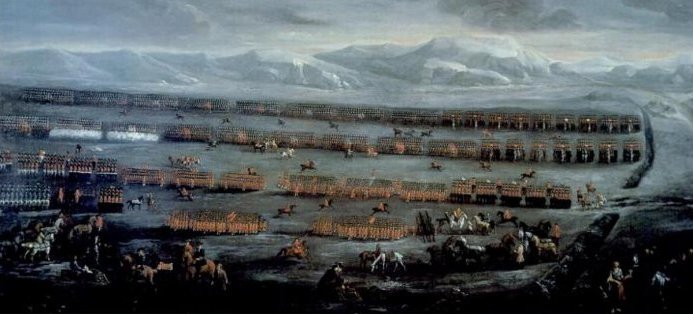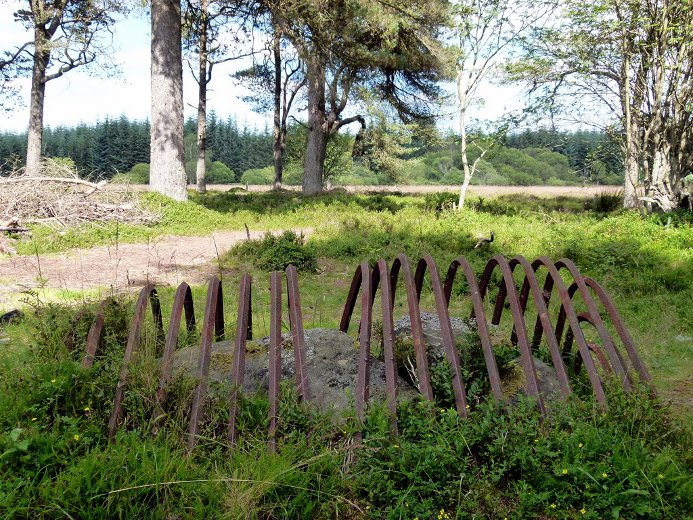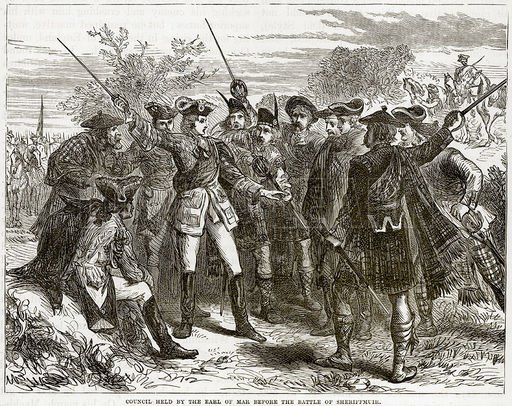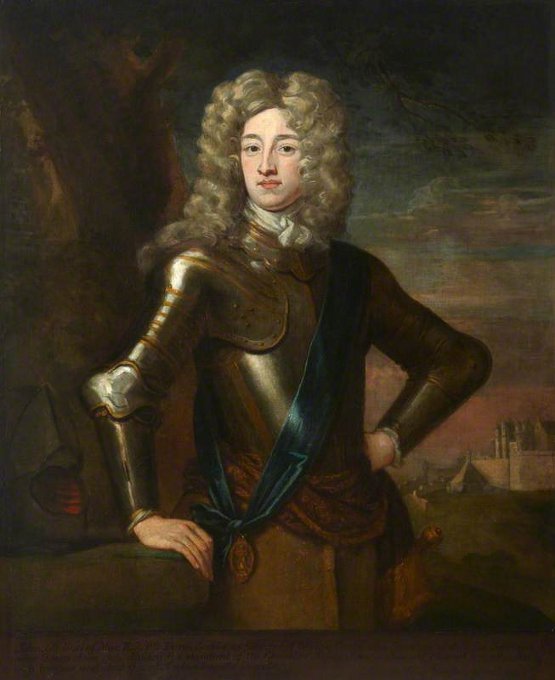Battle of Sheriffmuir
In 1707 the two kingdoms of Scotland and England had been united, a highly unpopular move across much of Scottish society. The Jacobites tried to exploit this not simply to reverse the union, but to gain the crown of both England and Scotland.
An unsuccessful rising took place in 1708. Then, in 1714, when the Elector of Hanover succeeded Queen Anne to the throne he alienated a range of former supporters of Anne. One of these, the Earl of Mar, threw in his lot with the Jacobites and in September began to raise forces to march south to join with English Jacobites, in an attempt to return a Stuart to the throne. To counter the uprising the government dispatched a combination of Scottish and English regiments under the command of the Duke of Argyle. During October there were various manoeuvres, including against Edinburgh. Then on the 10th November the Jacobite army marched south from Perth, reaching Kinbuick, just north east of Dunblane on the 12th. Argyll had marched north and was already at Dunblane, intending to intercept the Jacobite force. The government army may have been outnumbered by about 2:1, but it was made up of regulars fighting under an experienced commander.
Action
The Jacobites drew up in battle formation on Kinbuick Muir, presumably in order to control the road north from Dunblane, but had to move more than two kilometres south east from here on to Sheriff Muir, to the east of Dunblane, to engage the government force. The manoeuvre proved difficult for the inexperienced Jacobite troops, disrupting their intended battle formation and putting them at a disadvantage in the coming action. Argyll's forces ascended the hill from the direction of Dunblane, but the Jacobites were on the field first and could choose their ground. The Jacobite forces deployed with boggy ground on their left flank. It may be that they intentionally exploited this ground, unsuitable for cavalry action, to anchor their flank and enable the massing of their inexperienced cavalry on the right flank, giving them at least some advantage in numbers against their far more experienced adversaries.

Both armies outflanked each other on their right wings, frequently intentionally the stronger of the two cavalry wings in historic battles. The Jacobite attacks were somewhat disordered, but on the right they were successful and drove off the Hanoverian left who had still not fully deployed and seem to have been caught in the flank by the Highlanders' charge. These Jacobite forces of the right then continued in pursuit of the routed forces, thus losing the opportunity to attack the exposed flank of the remaining forces of the government centre.
On the Jacobite left the Lowland forces also attacked but were met by well deployed government troops, who held the Jacobite attack. The frozen marsh seems to have enabled government foot though not cavalry to manoeuvre on the Jacobite left flank. The Jacobites were driven back in a fighting retreat as far as the River Allen east of Kinbuck, during which many were probably killed, particularly at the crossing of the Allen.
The returning troops from the Jacobite right seem to have stood on Kippendaive Hill but were not brought back into the action. Argyle, with perhaps 1000 troops of his right wing, comprising men returning from the pursuit towards the Allen, drew up in enclosures and mud walls for protection. Thus the original location of the action was largely abandoned and the forces in the final phase may have approached from almost opposite directions to where they originally deployed. The final Jacobite advance faltered within musket range and they withdrew as dusk approached. Though neither side could claim a genuine victory, the momentum of the rebellion had been broken and it soon then petered out.

Plan of the Battle of Sheriffmuir, fought 13 November 1715
© Crown Copyright and © National Library of Scotland
The Ballad of Sheriff Muir
There's some say that we wan and some say that they wan
And some say that nane wan at a' man
But one thing is sure that at Sheriff Muir
A battle was fought on that day man
And we ran and they ran and they ran and we ran
And we ran and they ran awa' man
Whether we wan or they wan or they wan or we wan
Or if there was winnin' at a' man
There's nae man can tell save our brave general
Wha first began runnin' awa' man
And we ran and they ran and they ran and we ran
And we ran and they ran awa' man
The McCalmans
Date: 13 November 1715
Jacobites: Earl of Mar
Government: John Campbell

The Gathering Stone. The iron ribs protect a fallen and broken pillar known as the Gathering Stone. According to legend, The Duke of Argyll, commanding the Hanoverian army, watched the battle of Sheriffmuir from here in 1715.

Meeting held by the Earl of Mar before the Battle of Sheriffmuir. © Look and Learn

John Erskine (1675-1732), 6th Earl of Mar by Godfrey Kneller
© Historic Enivronment Scotland, Edinburgh

John Campbell, 2nd Duke of Argyll by William Aikman (c.1720)
NPG 737 © National Potrait Gallery, London